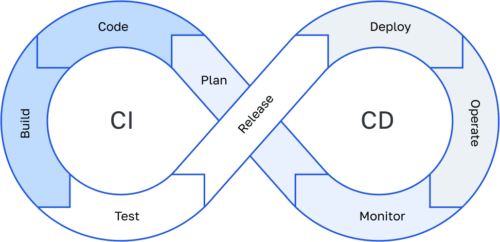-
-
Cloud Computing
-
Multicloud
-
Platform Services
Cloud ComputingFlexibly scalable IT infrastructure powered by ITGLOBAL.COM and hyperscaler clouds.
MulticloudEnvironment of maximum flexibility provides broad opportunities to use the cloud constructs of different origins.
Platform ServicesSolutions for any business needs and flexible workload management.
-
-
-
Managed Clouds
-
IT Management Services
-
Managed DevOps
-
Managed Kubernetes
-
Managed Databases
-
Managed Networks
Managed CloudsFlexible, powerful, and secure solutions powered by hyperscalers and managed by ITGLOBAL.COM.
IT Management ServicesWe provide clients with 24/7/365 IT management service, which includes monitoring, support, maintenance and management.
Managed DevOpsManaged CI/CD, Docker and Kubernetes.
Managed KubernetesKubernetes clusters we help to build and implement.
Managed DatabasesDatabases we create, setup and manage.
Managed NetworksNetwork infrastructure management and monitoring.
-
-
-
Virtualization Solutions
-
Technology partners
-
Telecom Solutions
Virtualization SolutionsSolutions for efficient use of infrastructure resources.
Technology partnersITGLOBAL.COM carefully chooses the most promising technology partners and assists companies in integrating their solutions.
Telecom SolutionsPackage solutions for telecom: traffic inspection and packet filtering
-
- Managed IT
- Managed DevOps
- Managed CI/CD
- Managed IT
- Managed DevOps
- Managed CI/CD
Managed CI/CD
Integration, delivery and deployment processes we automate
What is Managed CI/CD
Managed CI/CD is the automated conveyor creation and setup. This conveyor simplifies merging a freshly written code into the main code base, as well as its deployment to various target infrastructures. The service assumes implementation of operational guidelines that help the development team with frequent insertions of code changes. ITGLOBAL.COM DevOps engineers will design a new architecture, implement a customized solution, and manage the entire process.
CI/CD
CI/CD development method is the main DevOps component, also referring to Agile practices. The technology essence is in the non-stop automation and monitoring throughout the entire life cycle of an application, from integration and testing to delivery and deployment of a ready product.

Why do you need Managed CI/CD
New technology adapting the existing processes often becomes a big challenge due to hardships in new principles’ comprehension and implementation. At first glance it may seem that the implementation of CI/CD methods is a simple task. Yet you may face a number of issues in the process:
- mishmash of CI and CD notions;
- issues with activities coordination;
- ineffective use of resources;
- security issues.
We’ll help to avoid those hardships, but that’s not all. We’ll tune up the existing processes, put the entire project to order – also ensuring complete information privacy.
The tools
GitLab
Docker
Travis-CI
Circle-CI
Jenkins
TeamCity
How it works
- Design of processes’ new architecture, selection of a suitable CI/CD system
- Working environment preparation: implementation of technical practices necessary for CI/CD conveyor build
- Help with a new approach adapting: the processes assigned as primary, while the technologies — as secondary

Continuous Integration
Continuous Integration is the core of CI/CD process. This practice means merging working copies of a code in the central repository, which later merges with the main development branch line. Automated delivery and testing occur right after. CI helps avoiding project’s production release issues due to automated testing steps.
Continuous Delivery
Continuous Delivery starts where CI ends – expanding the latter. This practice means unfolding a code in a testing and/or working environment after each modification. This stage is automated but requires a manual deployment confirmation.
Continuous Deployment
Continuous Deployment is the final stage of CI/CD conveyor, which combines CI и CD practices. This stage’s main feature is full automation: no confirmation for updates’ deployment ever needed.
Advantages of CI/CD method
Minimization of risks
Automated delivery and testing help to detect and correct errors fast
Timely feedback
Fast error management decreases the feedback cycle
Updates’ deployment speed
Timely roll-out of new functionalities is the competitive business advantage
High quality of end product
Error detection at early stages of development increases the final product quality
Onboarding process
- Evaluation of a project’s architecture, development stage and volume.
- Audit of the existing processes.
- Conclusion of NDA and the contract.
- Elimination of paperwork technical debt.
- Project roadmap design in accordance with client’s goals.
- Roadmap-defined iteration movement launch, in cooperation with the client’s development team.
- Cross-checking of outcomes, next roadmap stage design, continuation of works in accordance with CI/CD method.
Why ITGLOBAL.COM
Expertise
Many years of using DevOps and CI/CD practices for the internal projects of the company
Number of projects
Competent management of IT projects of various scale and complexity
Outcomes
Projects’ evident positive dynamics and service value comprehension

Get in Touch
Have a question or interested in learning more how IT can help your business? Please connect with us.